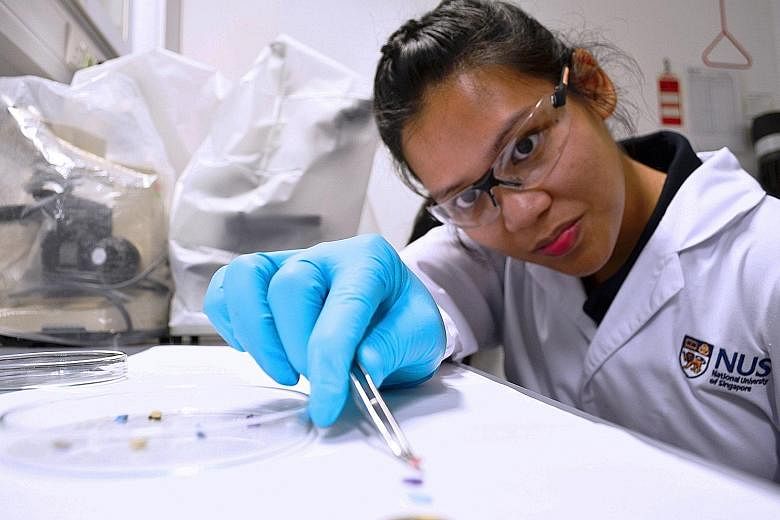Toxic bacteria capable of causing coral bleaching and wound infections in humans have been found on microplastics picked up from Singapore's coastline between April and July last year.
Marine scientists at the National University of Singapore (NUS) found more than 400 different types of bacteria on 275 pieces of microplastics collected from three beaches - Lazarus Island, Sembawang Beach and Changi Beach.
The plastic items were smaller than 5mm each.
During this six-month study, the team attempted to examine the bacterial communities on microplastics collected from coastal regions of Singapore.
Using DNA sequencing, the scientists found the bacterium Photobacterium rosenbergii, often associated with coral bleaching and disease.
The research team also found species of marine Vibrio - known to be a major cause of wound infections in humans - and species of Arcobacter, a bacterium known to cause gastroenteritis.
The team consists of Dr Sandric Leong, research lead and senior research fellow at the NUS Tropical Marine Science Institute, and Ms Emily Curren, a PhD student at the institute and the Department of Biological Sciences at the NUS Faculty of Science.
Ms Curren said: "As the microplastics we studied were collected from locations easily accessible to the public and in areas widely used for recreation, the identification of potentially pathogenic bacteria is important to prevent the spread of diseases."
She added that the microplastics originated from disposable forks, spoons and straws, which can take hundreds of years to biodegrade.
There are currently more than 150 million tonnes of plastics in the ocean, said the researchers.
Microplastics in aquatic environments, in particular, pose a real problem. They take much longer to degrade due to salty conditions and lower temperatures, and are also a habitable surface for marine bacteria to colonise.
These bits and pieces of plastic become "vehicles" for the toxic bacteria to thrive.
When accidentally swallowed by fish, mussels and shrimp, the researchers say, these harmful bacteria could find their way up the food chain - to humans.
Dr Leong said: "Microplastics form a large population of plastic pollution in marine environments.
"Marine organisms may consume bits of microplastics unintentionally and this could lead to the accumulation and subsequent transfer of marine pathogens in the food chain.
"Understanding the distribution of microplastics and identifying the organisms attached to them are crucial steps in managing plastic pollution on a national and global scale," Dr Leong added.
But toxic bacteria are not all that are found on microplastics.
Species of the bacteria Erythrobacter, which is capable of degrading plastic, and Pseudomonas veronii, which has been used to clean up oil spills, were found.
Ms Curren said: "Given the predicted increase in plastic waste contamination in oceans, the discovery of such bacteria provides important nature-friendly alternatives for the mitigation of plastic pollution and toxic pollutants."


